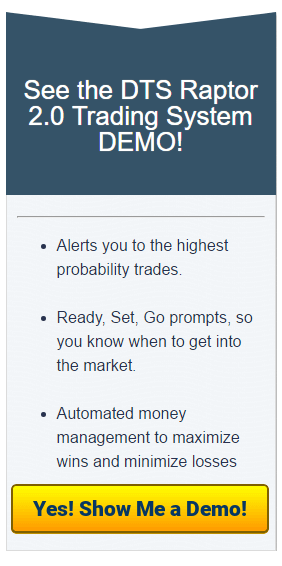Day Trading Tips and Tricks
Generate Day Trading Profits with a Small Account
Day Trading Profits are Not Just For Large Account Traders
 While it is certainly true that it takes money to make money, not everyone has a well-funded trading account for their trading portfolio. Typically, beginning traders start off with a relatively small account, just large enough to cover the required margin. While traders learn to trade, a small account offers minimal losses. It also requires rigorous risk management (especially money management), simply because to protect any day trading profits, there is no room for any mistakes or an unexpected loss.
While it is certainly true that it takes money to make money, not everyone has a well-funded trading account for their trading portfolio. Typically, beginning traders start off with a relatively small account, just large enough to cover the required margin. While traders learn to trade, a small account offers minimal losses. It also requires rigorous risk management (especially money management), simply because to protect any day trading profits, there is no room for any mistakes or an unexpected loss.
Making Trades with a Small Trading Account
Having an undercapitalized or small day trading account creates significantly more challenging problems when making trades. Alternatively, accounts that are fully funded have significant buffers against any unexpected loss or error in trading. For individual day traders that have a small account, they just do not share the same luxury. Those with large accounts have the ability to trade any market while small account holders are limited to those with low margin requirements and even lower tick values. Traders with large accounts are provided more flexible trading that includes multiple contracts, while small accounts have to be limited to trading strategies and day trading indicators that can only work with minimal funds.
Additionally, the small account “profit and loss” scenario creates psychological issues that can develop its challenges for the trader as well. Knowing they have to put all their eggs in one basket, a small trader is less likely to involve themselves in a trade unless they are 100% sure of potential day trading profits. Failing to generate a profit can instantly convert their account to one no longer tradeable until additional funds have been added.
The 2% Rule Can Preserve Day Trading Profits
While there are definite disadvantages to a small account, there are few ways around it. Larry Hite, in Jack Schwager’s Market Wizards (1989), describes his 1 percent rule which he applies to a wide range of markets. This principle has since been adapted by short-term traders as the 2 percent rule:
The 2 Percent Rule: Never risk more than 2 percent of your capital on any one stock.
This method means that a run of 10 consecutive losses would only consume 20% of your capital. It does not mean that you need to trade 50 different instruments– your money at risk is usually far less than the purchase price of the stocks, contracts, or pairs.
Applying the 2 Percent Rule
1. Calculate 2 percent of your trading capital: your Capital at Risk:
- Deduct brokerage on the buy and sell to arrive at your Maximum Permissible Risk
2. Calculate your Risk per Share:
- Deduct your stop-loss from the buy price. For a short trade, the procedure is reversed.
3. The Maximum Number of contracts is then calculated by dividing your Maximum Permissible Risk by the Risk per Share.
Additionally, the small trader can learn to trade conservatively. Even those with larger funds often use the conservative rule as a discipline tool to effectively manage their “risk to reward” ratio, along with their “win to loss” ratio.
Many traders that are highly undercapitalized have found strategies for generating consistent day trading profits. While it is harder to trade with a smaller account, having fewer funds also has its advantages. Being undercapitalized allows the trader to focus on risk management and apply techniques to ensure their profitability. In time, the discipline they acquired will help them when their accounts begin to grow.





